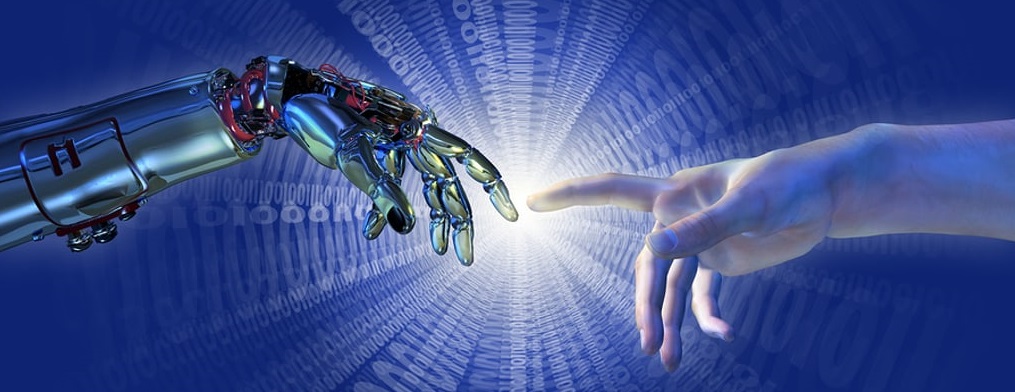AI Human Interfaces

AI in nanotechnology
Nanosensor
Nanosensors are very small nanoscale devices. These sensors measure the physical quantities of atoms and convert them into detectable signals so that the sensors can complete their work and sense tiny objects. Nanotechnology is part of the science and technology of controlling substances on the atomic and nanoscale (10-100 nanometers).
Applications:Nanosensors help detect nanoparticles and their potential toxicity in the air. Nanoparticles are increasingly used in various products, and their inevitable release into the environment has become a major concern. These particles are harmful to the environment because they contaminate the soil. But with the use of nanosensors, the number of harmful nanoparticles can decrease exponentially.
Nanosensors can help detect cancer cells and eliminate them, thus eliminating the threat of cancer. In the fight against cancer, half of the victory was based on its early detection. If we can find cancer before it develops, we can save lives. Thanks to nanotechnology and nanosensors, this is quickly becoming a possibility. Although the nanosensor has not been used clinically for cancer detection or diagnosis, it has appeared on many medical screens on the market and is used for the early detection of cancer cells.
Nanorobots
Nanorobots are based on molecular-level biological principles to design prototypes, design and manufacture "functional molecular devices" that can operate in nanospace, also known as molecular robots; and the development of nanorobots has become the frontier of today's technology. Nanosensor is one kind of Nanorobots.
Applications:The military nanorobot, commonly known as "bai ant soldier", is an amazingly destructive robot that is smaller than ants and driven by solar waves. They can infiltrate the enemy's military key departments (command headquarters, arsenals, heads' offices, secret bases, etc.) through various channels to carry out reconnaissance activities, and even directly attack targets.
In the medical field, Nano-robots can be used in combination with minimally invasive medical treatment of fine treatment, such as intra-vascular nano-robot surgery and can be used to complete the cutting of cell chromosomes.
Brain-machine interface
The brain-computer interface is a direct connection path established between the human or animal brain (or brain cell culture) and external devices. In the case of a unidirectional brain-computer interface, the computer either accepts commands from the brain or sends signals to the brain (such as video reconstruction), but it cannot send and receive signals at the same time. The two-way brain-computer interface allows two-way information exchange between the brain and external devices.
Problems:Intrusive devices imply greater trauma and higher risk for individuals.
Because the object of the brain-computer interface is the human brain, it can directly change the core parts of human beings, including cognitive ability, personality characteristics and even self-concepts. This change may bring very profound problems of identity and self-identity.
AI in games
In video games, AI is used to generate responsive, adaptive or intelligent behaviors primarily in non-player characters (NPCs) similar to human-like intelligence. It serves to improve the game-player experience rather than machine learning or decision making. From the beginning, artificial intelligence has been an important part of the game world, and this technology has developed very fast.
By studying player behavior, artificial intelligence can help the development of mobile games. Artificial intelligence allows designers to analyze how players interact with Android games.
AI can make the rules of the game more variable and allow each user to have a different personal experience. For example, in PUBG, you can customize controls, appearance, weapons, and many other things. Although this is just the beginning, in the future, the game will even learn the likes and dislikes of individual players and provide a personalized experience.
Artificial intelligence can reduce the time for developers to build different levels and process environments. In addition, it can even create an entire game from scratch. Simply put, it means-create bigger and better games and more complex environments at any time.
Challenges facing us:The dimension of the input data: The AI trained by machine learning needs to use these input data to determine what should be done in the current situation. Obviously, the more dimensions of the input data, the more complicated the process of training and using the entire model (the training time required to obtain the model and actual use it takes longer to determine what needs to be done in the current state). But not all data is useful and necessary. Some data is optional and some data can be combined. These things require a certain degree of manual intervention, but how to choose and refine these data is still missing a reliable method.
Time issue: If you want to implement machine learning AI to judge all operations in the game, that is, each operation is obtained by the model's judgment from the current game state, then the time required for each judgment must be on the order of tens of milliseconds Otherwise, some key operations (flash hiding skills) cannot be achieved, which is extremely difficult for some games with extremely high game state complexity.
Training methods: In games that have been implemented in experiments such as Go, reinforcement learning seems to have achieved better results. However, imitation learning trained with actual human battle data is very limited by the completeness of the data used. Whether it covers all possible tactics and situations, otherwise it may cause uneven development of the trained AI.
Other articles to read on this topic:
- Understanding The Role Of AI In Games
- Can Nanotechnology Build The AI Of The Future?
- Artificial Intelligence + Brain-Computer Interface = The Ultimate Human Hack
- Brain-Computer Interfacing: Applications And Challenges